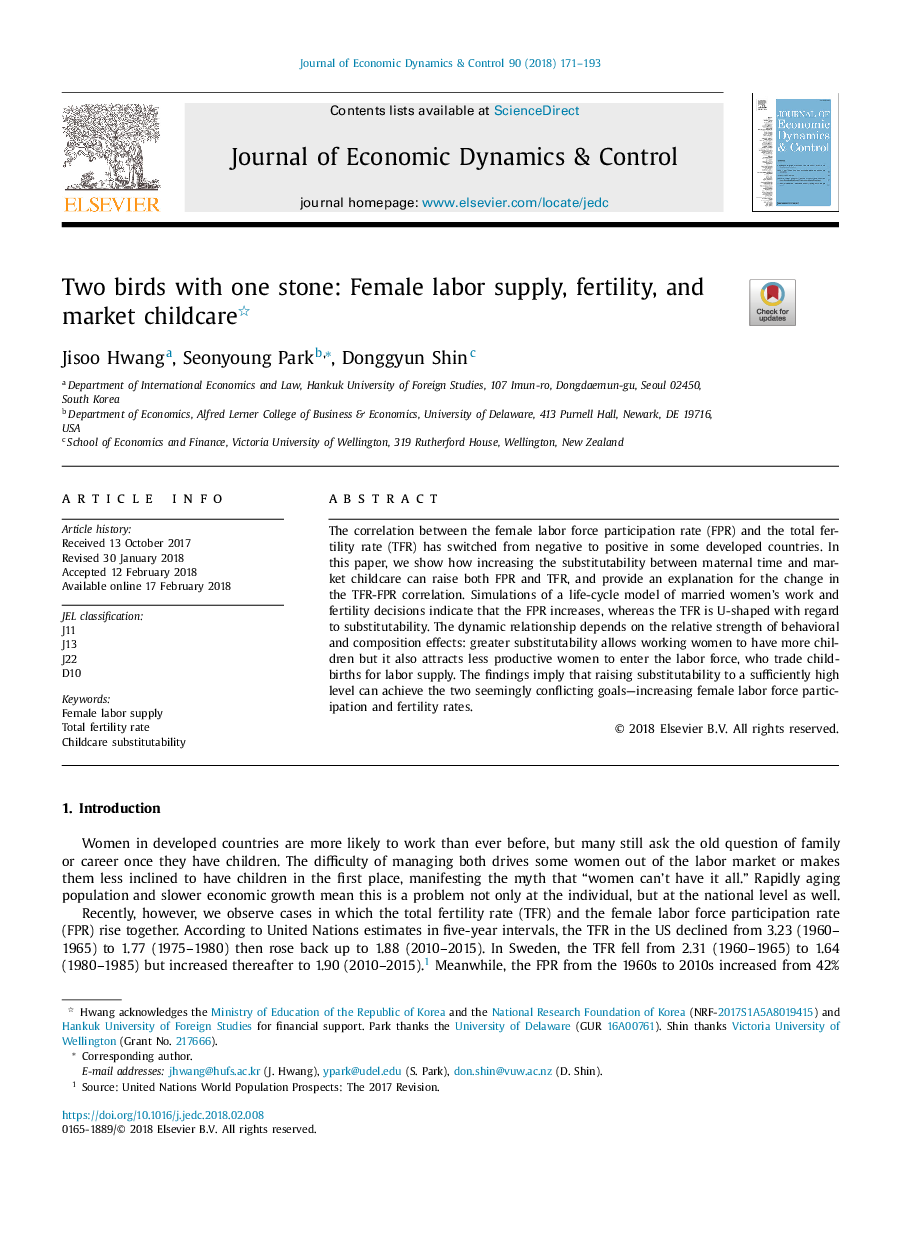| Article ID | Journal | Published Year | Pages | File Type |
|---|---|---|---|---|
| 7358700 | Journal of Economic Dynamics and Control | 2018 | 23 Pages |
Abstract
The correlation between the female labor force participation rate (FPR) and the total fertility rate (TFR) has switched from negative to positive in some developed countries. In this paper, we show how increasing the substitutability between maternal time and market childcare can raise both FPR and TFR, and provide an explanation for the change in the TFR-FPR correlation. Simulations of a life-cycle model of married women's work and fertility decisions indicate that the FPR increases, whereas the TFR is U-shaped with regard to substitutability. The dynamic relationship depends on the relative strength of behavioral and composition effects: greater substitutability allows working women to have more children but it also attracts less productive women to enter the labor force, who trade childbirths for labor supply. The findings imply that raising substitutability to a sufficiently high level can achieve the two seemingly conflicting goals-increasing female labor force participation and fertility rates.
Related Topics
Physical Sciences and Engineering
Mathematics
Control and Optimization
Authors
Jisoo Hwang, Seonyoung Park, Donggyun Shin,
